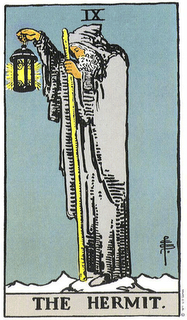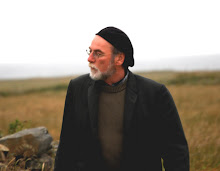Where Madness and Material Things Collide
 Reading Waiting for the Macaws gave me the queasy feeling I had when I first read Margaret Atwood’s futuristic, dystopian novel Oryx and Crake. Her world gone wrong was based on research available before 2003, and, in it, Atwood’s characters play the interactive web game, Extinctathon.
Reading Waiting for the Macaws gave me the queasy feeling I had when I first read Margaret Atwood’s futuristic, dystopian novel Oryx and Crake. Her world gone wrong was based on research available before 2003, and, in it, Atwood’s characters play the interactive web game, Extinctathon.What Glavin does in his book is illustrate the non-fiction picture from past and present. The two books belong on the same shelf. Glavin shows that throughout history, humans haven’t caused extinction because of “willful rapacity.”
. . .That’s from Kim Goodliffe’s very friendly review of Waiting for the Macaws in today’s Vancouver Sun (not online). Given the company and context Goodliffe provides, I certainly wouldn’t object to having my book on the same shelf with a work of fiction, in this case. But these days it’s especially necessary to separate the genres, and to defend facts from certain other things.
This point allows me to bitch just a bit about today’s Ottawa Citizen, in which Tom Spears is factually wrong about my book, on several points. For one, I did not travel “to a place in Brazil called Curu.” I have never been to Brazil in my life. The Curu I visited, which occupies an entire chapter in the book, is quite unmistakably in Costa Rica. I did not see tigers in a preserve in Singapore. I saw one tiger there. In a zoo. And I did not visit a village in Tibet or find a “traditional culture” there on the verge of extinction. I have never been to Tibet. I didn’t write about Tibet.
And I’m not at all sure what Spears means when he writes that I have put my faith in “the views of the toothless United National Environment Program” or what Spears means when he writes that UNEP “wants us to adopt new models of how societies function.” News to me.
Spears writes: “Glavin's tactic is to put faces on the extinctions, presumably so that we'll care more.” I should give him credit for admitting his own presumption, but a central argument of the whole book is that most people actually do care already, and always have. That contention can be disputed or disagreed with, but just about everybody who’s reviewed my book, like the Edmonton Journal’s Scott Messenger, has got that point quite clearly:
That "human beings belong to a daft and bumbling species" is a point upon which writer Terry Glavin and I agree completely. His claim that we harbour "an abiding affection for other creatures," however, should be easily contestable, given the shoddy physical state of the Earth these days. Waiting for the Macaws, however, his new collection of essays exploring this affection, makes argument difficult. Glavin is a thoughtful and profoundly articulate conservationist whose passion has taken him around the globe to reassure us, and him, that we actually care.
. . . and that the facts matter, I would add.
Despite Humpty Dumpty, words do not mean anything we choose. Facts are still facts wherever they are used, and should be honoured in fiction as in history. The dictionary offers no exemption to novelists. They have the entire range of the human imagination at their disposal. They can play with light and shade, fantasy and magic, dancing free of reality to conjure their tales from the air. But facts are sacred. If writers use them to disguise their fabrications, I call them liars.
That’s what Simon Jenkins had to say for himself in yesterday’s Guardian. Douglas & McIntyre’s Scott Steedman brought Jenkins’ essay to my attention after we chatted at a fancy-shmancy luncheon at Vancouver’s Pan-Pacific Hotel yesterday, where the British Columbia award for Canadian Non-Fiction was presented to Rebecca Godfrey, for her book Under The Bridge.
Godfrey was a fine choice. Any of the finalists would have been. Among them were my chum John Valliant, for The Golden Spruce, and John Terpstra, for The Boys, and J.B. MacKinnon, for Dead Man in Paradise.
MacKinnon’s book is about his dead uncle, a priest named Arthur MacKinnon, the seventh of nine sons of a Cape Breton coal miner. Arthur is remembered among many Dominicans as Padre Arturo, the martyr. He was a mythic figure in MacKinnon’s boyhood imagination, the rebel hero of MacKinnon family lore: a blood sacrifice to the cause of the poor and oppressed.
It’s a great book.
I was there to introduce MacKinnon and to say a few words about his book and about the importance of the genre he works in, and which the award celebrates. So this is what I said:
This is an age in which relativism and an uncritical Pavlovian acceptance of received ideas have combined in such a way as to become a corrosive influence in public debates. The great questions of our age cry out for the kind of examination that relies upon the universal virtue of reason; the liberating methodologies of rational thought. These questions cry out for the kind of storytelling that is undertaken with an insistence upon the discernment of fact from fiction, faith from belief, and the real world from the world as it appears in propaganda and in wishful thinking.
In such an age, more than ever, facts matter. History matters. The truth matters: the truth as revealed by facts, as discovered by curiosity, by wonder, and by a consideration of the multiplicity of perspectives from which facts are seen. The real world matters. Honesty matters. And storytelling matters, because that is the way, as human beings, we have evolved to comprehend the universe around us. It is the way that great and grisly thing known as the truth is revealed to us.
It’s for these reasons that the vocation in which Jimmy MacKinnon works is so relevant today, and why this genre – literary non-fiction, creative non-fiction, belles lettres – is increasingly prominent in literature today. It is a genre that requires of its practitioners a deep and abiding devotion to the stuff of the real world, of real people, in all their flesh and blood and stupidity and magnificence and beauty.
The place where the real world intersects with myth is a haunted crossroads, fraught with great peril. It is the place where great poetry occurs, where wars begin and end, and where madness and material things collide in dizzying and disorienting alignments of narrative. It’s not a place for the lazy or the faint of heart. It’s a dangerous place, and Jimmy MacKinnon strides through that place bravely in this book of his, Dead Man in Paradise.
A bit overwrought, maybe. But I had to get it off my chest.
As you were.





1 Comments:
The place where the real world intersects with myth is a haunted crossroads, fraught with great peril.
Damned good line there.
Post a Comment
<< Home